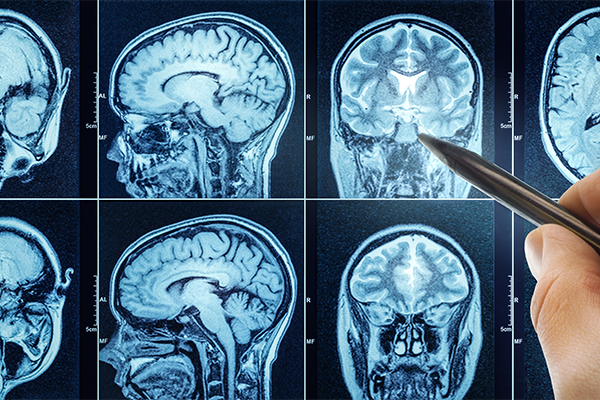
Neuro Intensive Care Units (NICUs) are specialized units designed to provide comprehensive care for patients with severe neurological conditions. These units are equipped with advanced technology and staffed by highly trained professionals to manage complex and life-threatening neurological disorders. Below, we explore ten common conditions treated in Neuro Intensive Care and the approaches used to manage them.
Synopsis
- Stroke Management
- Brain Tumors
- Aneurysms and Intracranial Bleeds
- Traumatic Brain Injury (TBI)
- Spinal Cord Injuries
- Seizures and Status Epilepticus
- Cerebral Edema
- Infections of the Central Nervous System
- Post-Neurosurgical Care
- Neuromuscular Disorders
- Summary on Common Conditions Treated in Neuro Intensive Care
- Conclusion
Stroke Management
-
Acute Ischemic Stroke: This occurs when a blood clot obstructs a blood vessel supplying the brain. Immediate treatment involves thrombolytic therapy to dissolve the clot and restore blood flow. Mechanical thrombectomy may be performed in certain cases to remove the clot physically.
-
Hemorrhagic Stroke: This type of stroke is caused by bleeding in the brain. Management includes controlling blood pressure, reversing anticoagulation, and surgical interventions to remove the blood and repair the damaged vessels.
-
Post-Stroke Care: After the acute phase, patients require rehabilitation to regain lost functions. This includes physical therapy, occupational therapy, and speech therapy.
Brain Tumors

-
Pre- and Post-Operative Care: Patients with brain tumours often require surgery. Pre-operative care focuses on stabilizing the patient and preparing them for surgery. Post-operative care involves monitoring for complications such as infections, bleeding, and swelling.
-
Complications and Rehabilitation: Post-surgical complications can include neurological deficits, which require rehabilitation. This may involve a multidisciplinary team to address physical, cognitive, and emotional needs.
Aneurysms and Intracranial Bleeds
-
Ruptured Aneurysms: When an aneurysm ruptures, it causes a subarachnoid haemorrhage. Immediate treatment includes securing the aneurysm through surgical clipping or endovascular coiling to prevent re-bleeding.
-
Subarachnoid Hemorrhage: Management involves controlling intracranial pressure, preventing vasospasm (narrowing of blood vessels), and monitoring for complications such as hydrocephalus.
-
Intracerebral Hemorrhage: This involves bleeding within the brain tissue. Treatment focuses on controlling blood pressure, managing intracranial pressure, and surgical evacuating the hematoma if necessary.
Traumatic Brain Injury (TBI)

-
Acute Management: Initial treatment involves stabilizing the patient, controlling intracranial pressure, and preventing secondary brain injury. This may include surgical interventions to remove hematomas or relieve pressure.
-
Monitoring and Rehabilitation: Continuous monitoring of neurological status is crucial. Rehabilitation focuses on physical, cognitive, and emotional recovery, often involving a multidisciplinary team.
Spinal Cord Injuries

-
Acute Care: Immediate treatment aims to stabilize the spine, prevent further injury, and manage complications such as respiratory issues and infections.
-
Surgical Interventions: Surgery may be required to decompress the spinal cord, stabilize the spine, and remove any bone fragments or foreign objects.
-
Long-Term Management: Rehabilitation is essential for maximizing functional recovery. This includes physical therapy, occupational therapy, and support for activities of daily living.
Seizures and Status Epilepticus

-
Acute Management: Seizures are managed with antiepileptic medications. Status epilepticus, a prolonged seizure, requires immediate intervention with intravenous medications to stop the seizure activity.
-
Monitoring and Prevention: Continuous EEG monitoring may be used to detect ongoing seizure activity. Long-term management involves adjusting medications to prevent future seizures.
Cerebral Edema
-
Causes: Cerebral edema can result from various conditions, including trauma, stroke, infections, and tumours.
-
Management Strategies: Treatment focuses on reducing intracranial pressure. This may involve medications such as mannitol or hypertonic saline, as well as surgical interventions like decompressive craniectomy.
-
Monitoring: Continuous monitoring of intracranial pressure and neurological status is essential to guide treatment decisions.
Infections of the Central Nervous System
-
Meningitis: This is an infection of the protective membranes covering the brain and spinal cord. Treatment involves antibiotics or antiviral medications, depending on the cause.
-
Encephalitis: Inflammation of the brain tissue, often caused by viral infections. Management includes antiviral medications, supportive care, and monitoring for complications.
-
Brain Abscesses: These are localized infections within the brain. Treatment involves antibiotics and surgical drainage of the abscess.
Post-Neurosurgical Care
-
Monitoring and Managing Complications: After brain or spinal surgery, patients require close monitoring for complications such as infections, bleeding, and neurological deficits.
-
Rehabilitation: Post-surgical rehabilitation focuses on helping patients regain lost functions and adapt to any new limitations. This involves a multidisciplinary team approach.
Neuromuscular Disorders
-
Guillain-Barré Syndrome: This is an autoimmune disorder that affects the peripheral nervous system. Treatment includes intravenous immunoglobulin (IVIG) or plasmapheresis to reduce the immune response.
-
Myasthenia Gravis: A chronic autoimmune disorder that affects neuromuscular transmission. Management involves medications to improve muscle strength and suppress the immune system.
-
ICU Management: Patients with severe neuromuscular disorders may require intensive care for respiratory support and monitoring for complications.
Summary on Common Conditions Treated in Neuro Intensive Care
|
Condition |
Description |
Acute Management |
Post-Acute Care |
|
Stroke |
Ischemic: Blood clot obstructs blood vessel |
Thrombolytic therapy, mechanical thrombectomy |
Rehabilitation: Physical, occupational, and speech therapy |
|
Brain Tumors |
Abnormal growth of brain cells |
Pre-op: Stabilize patient |
Rehabilitation for neurological deficits |
|
Aneurysms & Intracranial Bleeds |
Ruptured aneurysms, subarachnoid haemorrhage, intracerebral haemorrhage |
Surgical clipping, endovascular coiling |
Monitor for complications, manage intracranial pressure |
|
Traumatic Brain Injury |
Injury to the brain from external force |
Stabilize patient, control intracranial pressure, prevent secondary injury |
Continuous monitoring, multidisciplinary rehabilitation |
|
Spinal Cord Injuries |
Damage to the spinal cord |
Stabilize spine, manage complications |
Surgery if needed, rehabilitation for functional recovery |
|
Seizures & Status Epilepticus |
Abnormal electrical activity in the brain |
Antiepileptic medications, intravenous medications for status epilepticus |
Continuous EEG monitoring, adjust medications |
|
Cerebral Edema |
Swelling in the brain |
Reduce intracranial pressure with medications or surgery |
Continuous monitoring of intracranial pressure |
|
Infections of CNS |
Meningitis, encephalitis, brain abscesses |
Antibiotics or antiviral medications, surgical drainage if needed |
Supportive care, monitoring for complications |
|
Post-Neurosurgical Care |
Care after brain or spinal surgery |
Monitor for complications, and manage infections, bleeding, and neurological deficits |
Multidisciplinary rehabilitation |
|
Neuromuscular Disorders |
Guillain-Barré Syndrome, Myasthenia Gravis |
|
Intensive care for respiratory support, monitoring for complications |
Conclusion
Neuro Intensive Care Units play a crucial role in managing these complex and life-threatening conditions. The multidisciplinary approach, advanced technology, and specialized care provided in these units are essential for improving outcomes and quality of life for patients with severe neurological disorders.
For those seeking exceptional neuro-intensive care, Manipal Hospital Jaipur stands out as a premier institution. With state-of-the-art facilities, a dedicated team of experts, and a patient-centric approach, Manipal Hospital Jaipur ensures the highest standards of care for neurological conditions. Whether it's stroke management, brain tumour care, or post-neurosurgical rehabilitation, you can trust Manipal Hospital Jaipur to provide comprehensive and compassionate care.
If you have any specific questions or need more detailed information on any of these topics, feel free to ask!
FAQ's
An ischemic stroke occurs when a blood clot obstructs a blood vessel supplying the brain, while a hemorrhagic stroke is caused by bleeding in the brain. Treatment for ischemic stroke often involves thrombolytic therapy or mechanical thrombectomy, whereas hemorrhagic stroke management includes controlling blood pressure, reversing anticoagulation, and surgical interventions to repair damaged vessels.
Management of brain tumors in a Neuro ICU involves pre- and post-operative care. Pre-operative care focuses on stabilizing the patient and preparing them for surgery. Post-operative care includes monitoring for complications such as infections, bleeding, and swelling, and addressing any neurological deficits through rehabilitation.
Treatment for ruptured aneurysms includes securing the aneurysm through surgical clipping or endovascular coiling to prevent re-bleeding. Management also involves controlling intracranial pressure, preventing vasospasm, and monitoring for complications such as hydrocephalus.
Rehabilitation plays a crucial role in the recovery from TBI. It focuses on physical, cognitive, and emotional recovery and often involves a multidisciplinary team. Continuous monitoring of neurological status is essential, and rehabilitation aims to help patients regain lost functions and adapt to any new limitations.
Infections such as meningitis, encephalitis, and brain abscesses are treated with antibiotics or antiviral medications, depending on the cause. Management also includes supportive care and monitoring for complications. Surgical drainage may be necessary for brain abscesses.



















 6 Min Read
6 Min Read








25.png)









